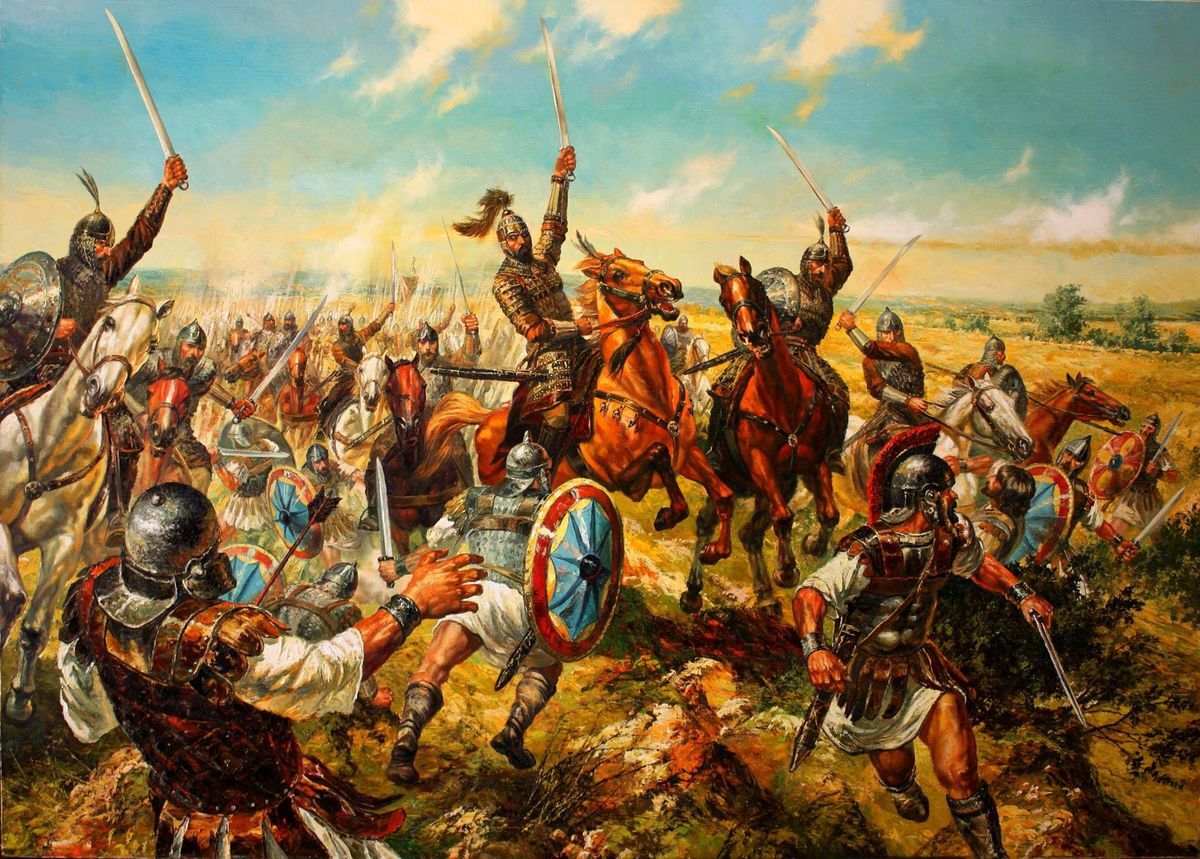
What was the Byzantine–Bulgarian War of 913–927? This conflict was a series of battles between the Byzantine Empire and the First Bulgarian Empire. It all started when Bulgarian Tsar Simeon I wanted to expand his territory and influence. The Byzantines, led by Emperor Romanos I Lekapenos, were determined to stop him. This war wasn't just about land; it was a clash of cultures and power. Both sides had their ups and downs, with battles raging across the Balkans. The war ended with a peace treaty in 927, which recognized Bulgaria's territorial gains and Simeon's title as Emperor of the Bulgarians. This conflict shaped the future of both empires, leaving a lasting impact on the region. Understanding this war helps us see how history is filled with struggles for power and influence.
Key Takeaways:
- The Byzantine–Bulgarian War of 913–927 was a 14-year conflict that shaped the Balkans, highlighting the importance of diplomacy and military strategies in medieval politics.
- This war marked Bulgaria's rise as a dominant force and influenced future Byzantine military and diplomatic approaches, leaving a lasting impact on the region's history.
Byzantine–Bulgarian War: An Overview
The Byzantine–Bulgarian War of 913–927 was a significant conflict between the Byzantine Empire and the Bulgarian Empire. This war marked a period of intense military and diplomatic engagements, shaping the political landscape of the Balkans.
-
The war began in 913 when Bulgarian Tsar Simeon I sought to expand his empire's influence over the Balkans.
-
Byzantine Emperor Leo VI's death in 912 left the empire vulnerable, as his successor, Alexander, was inexperienced.
-
Simeon I aimed to capture Constantinople, the heart of the Byzantine Empire, to assert dominance.
-
The conflict was fueled by a mix of territorial ambitions and religious disputes between the two empires.
-
The war lasted for 14 years, ending in 927 with a peace treaty that favored Bulgaria.
Key Battles and Strategies
The war saw several crucial battles and strategic maneuvers that defined its course. Both empires employed various tactics to gain the upper hand.
-
The Battle of Achelous in 917 was a decisive victory for Bulgaria, showcasing Simeon's military prowess.
-
Byzantine forces, led by Leo Phokas, suffered a massive defeat at Achelous, weakening their position.
-
Simeon used a combination of cavalry and infantry to outmaneuver the Byzantine army.
-
The Byzantines attempted to form alliances with other powers, including the Pechenegs, to counter Bulgarian advances.
-
Despite initial setbacks, the Byzantines managed to defend Constantinople from Bulgarian sieges.
Diplomatic Efforts and Treaties
Diplomacy played a crucial role in the war, with both sides seeking alliances and negotiating peace terms.
-
Simeon sought recognition as "Emperor of the Bulgarians and Romans," a title the Byzantines refused to grant.
-
The Byzantines used marriage alliances as a diplomatic tool, offering royal brides to secure peace.
-
In 927, a peace treaty was signed, recognizing Bulgaria's territorial gains and ending hostilities.
-
The treaty included a marriage alliance between Simeon's son, Peter I, and the Byzantine princess Maria.
-
This marriage solidified Bulgaria's status as a major power in the region.
Impact on the Byzantine and Bulgarian Empires
The war had lasting effects on both empires, influencing their political and cultural landscapes.
-
Bulgaria emerged as a dominant force in the Balkans, expanding its territory and influence.
-
The Byzantine Empire, though weakened, managed to preserve its core territories.
-
The war strained Byzantine resources, leading to internal reforms and military restructuring.
-
Cultural exchanges between the two empires increased, despite the conflict.
-
The peace treaty of 927 marked the beginning of a period of relative stability in the region.
Legacy of the Byzantine–Bulgarian War
The war left a lasting legacy, shaping the future interactions between the Byzantine and Bulgarian Empires.
-
Simeon I is remembered as one of Bulgaria's greatest rulers, achieving significant territorial expansion.
-
The conflict highlighted the strategic importance of the Balkans in medieval geopolitics.
-
The war influenced future Byzantine military strategies, emphasizing the need for strong defenses.
-
It also underscored the role of diplomacy and marriage alliances in medieval politics.
-
The Byzantine–Bulgarian War of 913–927 remains a pivotal chapter in the history of the Balkans, illustrating the complex interplay of war, diplomacy, and power.
Echoes of a Turbulent Era
The Byzantine–Bulgarian War of 913–927 left a lasting mark on medieval history. This conflict wasn't just about battles; it was a clash of cultures, ambitions, and power. The Byzantine Empire and the First Bulgarian Empire both sought dominance, leading to a series of intense confrontations. The war saw the rise of Tsar Simeon I, whose ambitions stretched beyond Bulgaria's borders, challenging the might of Byzantium. Despite the fierce fighting, the eventual peace treaty in 927 brought a temporary calm, reshaping the political landscape of the Balkans. This period highlighted the complexities of medieval diplomacy and warfare, where alliances shifted and power dynamics constantly evolved. Understanding this war offers insights into the resilience and strategies of both empires, reflecting the broader historical currents of the time. The echoes of this turbulent era continue to resonate, reminding us of the enduring impact of past conflicts.
Frequently Asked Questions
Was this page helpful?
Our commitment to delivering trustworthy and engaging content is at the heart of what we do. Each fact on our site is contributed by real users like you, bringing a wealth of diverse insights and information. To ensure the highest standards of accuracy and reliability, our dedicated editors meticulously review each submission. This process guarantees that the facts we share are not only fascinating but also credible. Trust in our commitment to quality and authenticity as you explore and learn with us.
